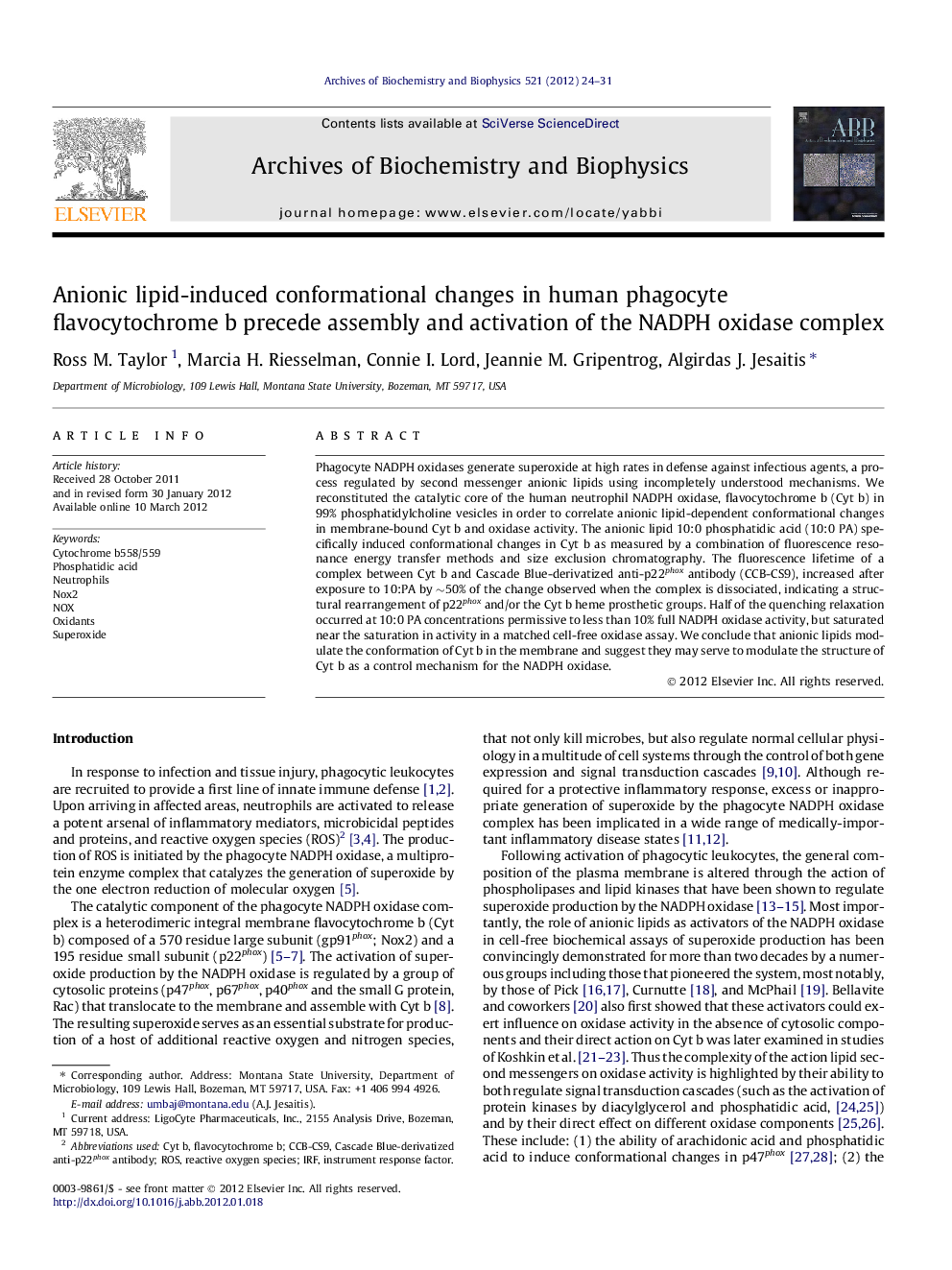| Article ID | Journal | Published Year | Pages | File Type |
|---|---|---|---|---|
| 1925565 | Archives of Biochemistry and Biophysics | 2012 | 8 Pages |
Phagocyte NADPH oxidases generate superoxide at high rates in defense against infectious agents, a process regulated by second messenger anionic lipids using incompletely understood mechanisms. We reconstituted the catalytic core of the human neutrophil NADPH oxidase, flavocytochrome b (Cyt b) in 99% phosphatidylcholine vesicles in order to correlate anionic lipid-dependent conformational changes in membrane-bound Cyt b and oxidase activity. The anionic lipid 10:0 phosphatidic acid (10:0 PA) specifically induced conformational changes in Cyt b as measured by a combination of fluorescence resonance energy transfer methods and size exclusion chromatography. The fluorescence lifetime of a complex between Cyt b and Cascade Blue-derivatized anti-p22phox antibody (CCB-CS9), increased after exposure to 10:PA by ∼50% of the change observed when the complex is dissociated, indicating a structural rearrangement of p22phox and/or the Cyt b heme prosthetic groups. Half of the quenching relaxation occurred at 10:0 PA concentrations permissive to less than 10% full NADPH oxidase activity, but saturated near the saturation in activity in a matched cell-free oxidase assay. We conclude that anionic lipids modulate the conformation of Cyt b in the membrane and suggest they may serve to modulate the structure of Cyt b as a control mechanism for the NADPH oxidase.
► Reconstituted flavocytochrome b (Cyt b) was probed by fluorescent-anti-p22phox mAb. ► Free CCB-CS9 fluorescence lifetime: τ = 3.8 nsec; Cyt b-bound CCB-CS9: τ = 3.4 nsec. ► CCB-CS9-Cytb complex + 10:PA: τ = 3.6 nsec; + dissociating peptide: τ = 3.8 nsec. ► Δτ implies a 10:0 PA-induced reorientation/distancing of hemes relative to p22phox. ► Structure changes precede oxidase activation in [10:0 PA] dependence.
